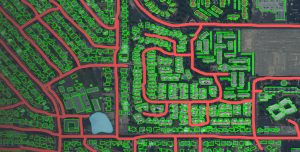TensorGo has taken an active role in the development of S1000D and has proven experience in authoring and delivering IETMs.
Interactive Electronic Technical Manual (IETM)
User friendly and convenient
TensorGo develops IETMs for all requirements – ranging from defense to commercial. We research, write, illustrate, design and publish. From authoring and updating, complete IETM systems allow authors to improve control of content and distribute changes and updates rapidly. A paperless, digital interactive environment of contextual information can drive faster and more accurate responses throughout the process.
An emerging area of technology that has rapidly gained acceptance throughout all branches of the military is the acquisition, development, deployment and sustainment of electronic technical documentation and associated multimedia elements. The explosion in popularity of the Internet has produced an insatiable appetite for near real time information needs. The Interactive Electronic Technical Manual (IETM) plays a major role in converting a paper based manual copy to digital one with specific standards.
IETM/IETP technology converts information manual to digital one making it faster, easier, user friendly and more accessible. It is an on-demand electronic manual which is the most efficient and cost-effective method to control, deliver and maintain content. The authored IETMs allow operators and maintenance personnel to locate needed information far more rapidly in the form of digital rather than paper manuals.
In TensorGo IETM Lab, we are capable of developing Interactive Electronic Technical Manuals with functional leave of Type-II (i.e. Class IV, Class V and Class VI) and provide interface to massive quantities of technical information and are custom-designed and developed to reach an extensive audience. We can expertly design and develop simple transformations as well as author complex interactive information architectures.
IETM/IETP technology converts information manual to digital one making it faster, easier, user friendly and more accessible. It is an on-demand electronic manual which is the most efficient and cost-effective method to control, deliver and maintain content. The authored IETMs allow operators and maintenance personnel to locate needed information far more rapidly in the form of digital rather than paper manuals.
In TensorGo IETM Lab, we are capable of developing Interactive Electronic Technical Manuals with functional leave of Type-II (i.e. Class IV, Class V and Class VI) and provide interface to massive quantities of technical information and are custom-designed and developed to reach an extensive audience. We can expertly design and develop simple transformations as well as author complex interactive information architectures.
How TensorGo Can Make A Difference?
Take a look inside
Our team of experts is ready to assist with authoring or converting technical data into an interactive format. Typically, IETMs and IETPs are based on a leading publication standard, like the S1000D standard. IETMs have rich features like
- Appropriateness on various electronic devices like desktop, laptops and tablets.
- Screen renditions can include material derived from data stored in textual, graphical, audio or video formats in a relational database which is composed of logically connected but randomly accessible IETM data elements.
- Simple and intuitive user interface with completely hyper-linked table of contents.
- Frame oriented instead of being page oriented.
- Powerful search capabilities with hyperlinks to referenced text and illustrations.
- Interactive intelligent schematics.
- Animated and interactive 3-D interactive graphics to display parts and assemblies.
- Historical record of changes.
- IETP includes conditional branching mechanisms, which can be based on user feedback. The parameters are evaluated at run-time and their values depend on context and specific user input.
In Class VI, the Advanced Interactive Electronic Technical Manual (A-IETM) is being formulated using Augmented Reality (AR) designed to guide the standards used in the mark-up of documentation - the idea being a UI-independent data stream.
Apart from Class IV and V, we aim to raise our standard to Class VI. In Class V, the documentation is integrated with expert systems that may influence the display of content. For example, the IETM system may aggregate data from a large number of users input, feed that to the expert system that analyzes it and then the result gets fed back to the user through the IETM system. An analogy might be search, where the search results are improved based on analysis of large data sets of previous queries entered by users. In Class V, a network model database and a dynamic multi-destination hyperlink system is used. It includes system-oriented layers and troubleshooting as well as assembly and disassembly aspects.
Apart from Class IV and V, we aim to raise our standard to Class VI. In Class V, the documentation is integrated with expert systems that may influence the display of content. For example, the IETM system may aggregate data from a large number of users input, feed that to the expert system that analyzes it and then the result gets fed back to the user through the IETM system. An analogy might be search, where the search results are improved based on analysis of large data sets of previous queries entered by users. In Class V, a network model database and a dynamic multi-destination hyperlink system is used. It includes system-oriented layers and troubleshooting as well as assembly and disassembly aspects.
IETM is widely used in the defense, aerospace, electronic equipment and manufacturing industries to instruct and share technical information with those using their equipment, machinery, systems, and software. IETM products deliver excellent and efficient alternative to paper manuals with their ease-of-use, cross-referencing capabilities and digital portability. We are specialized to transform the legacy and paper-based manuals to IETMs by delivering on storage disks and Web.



